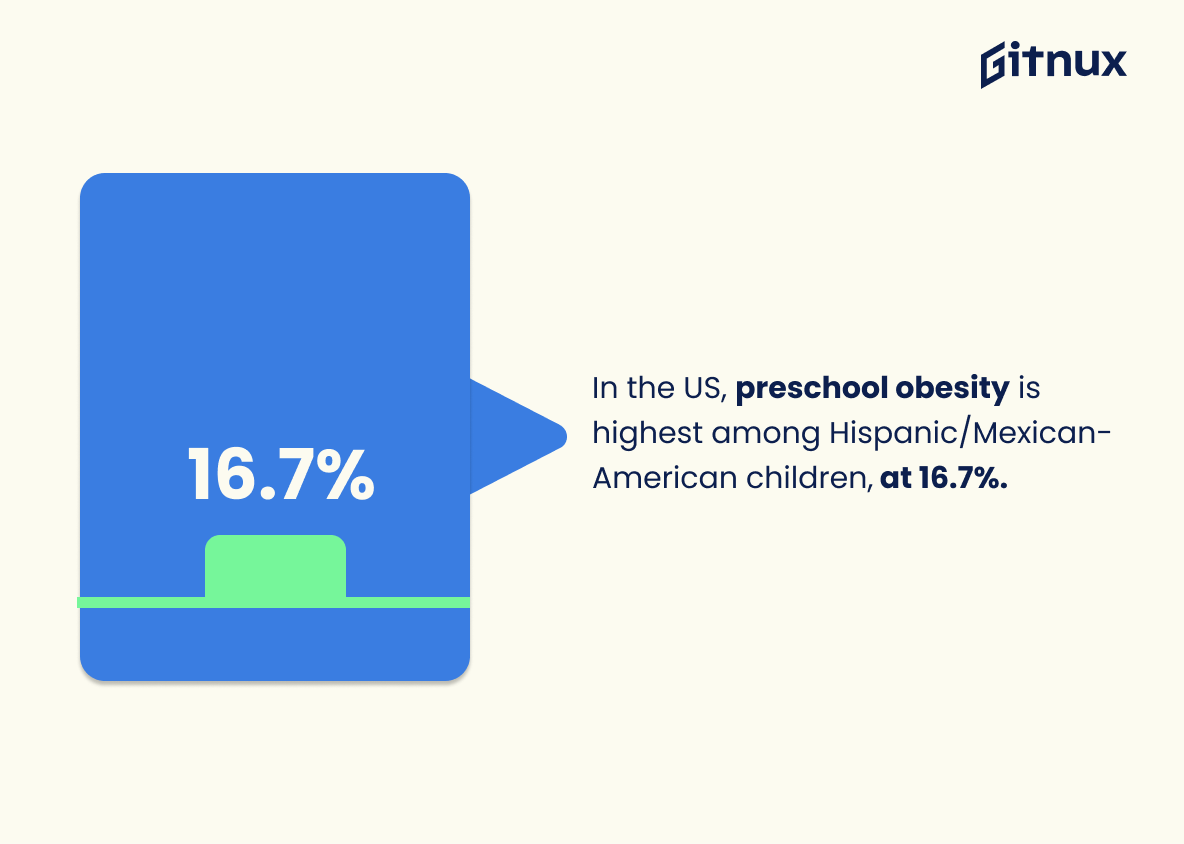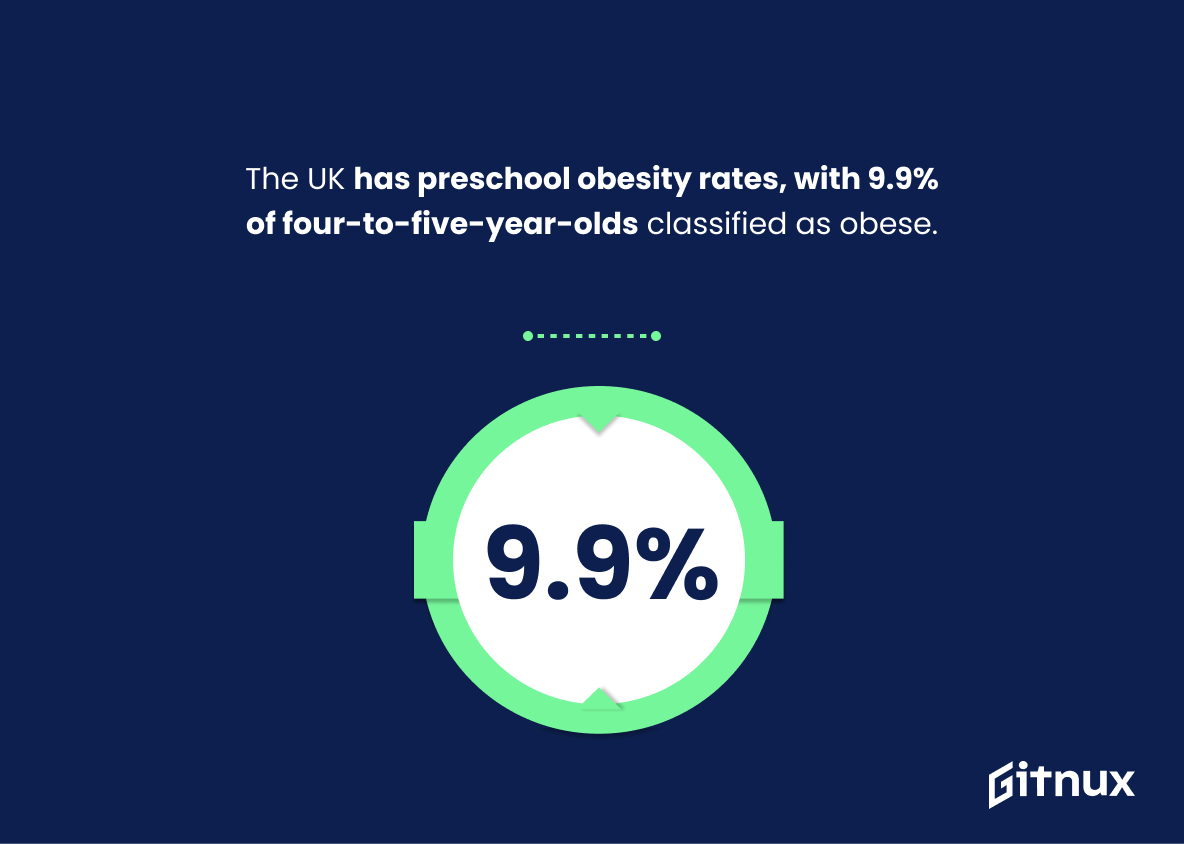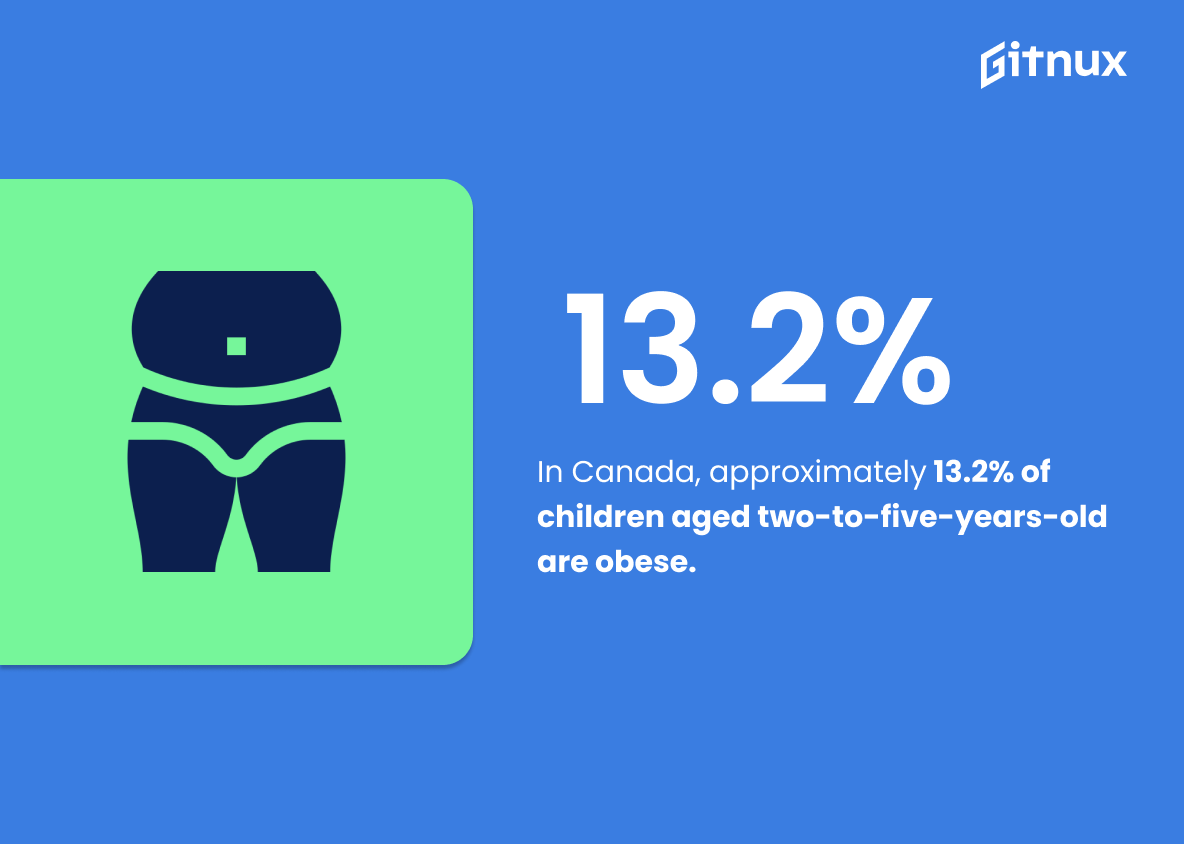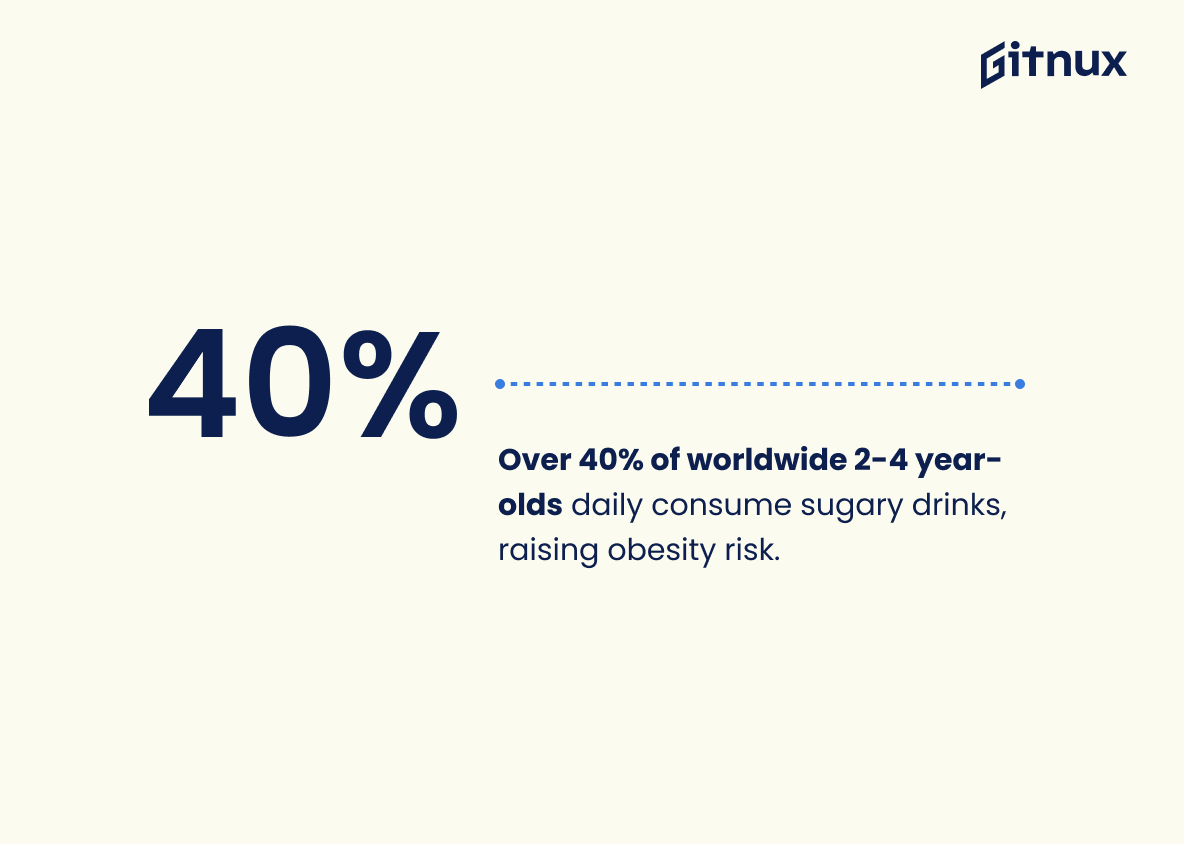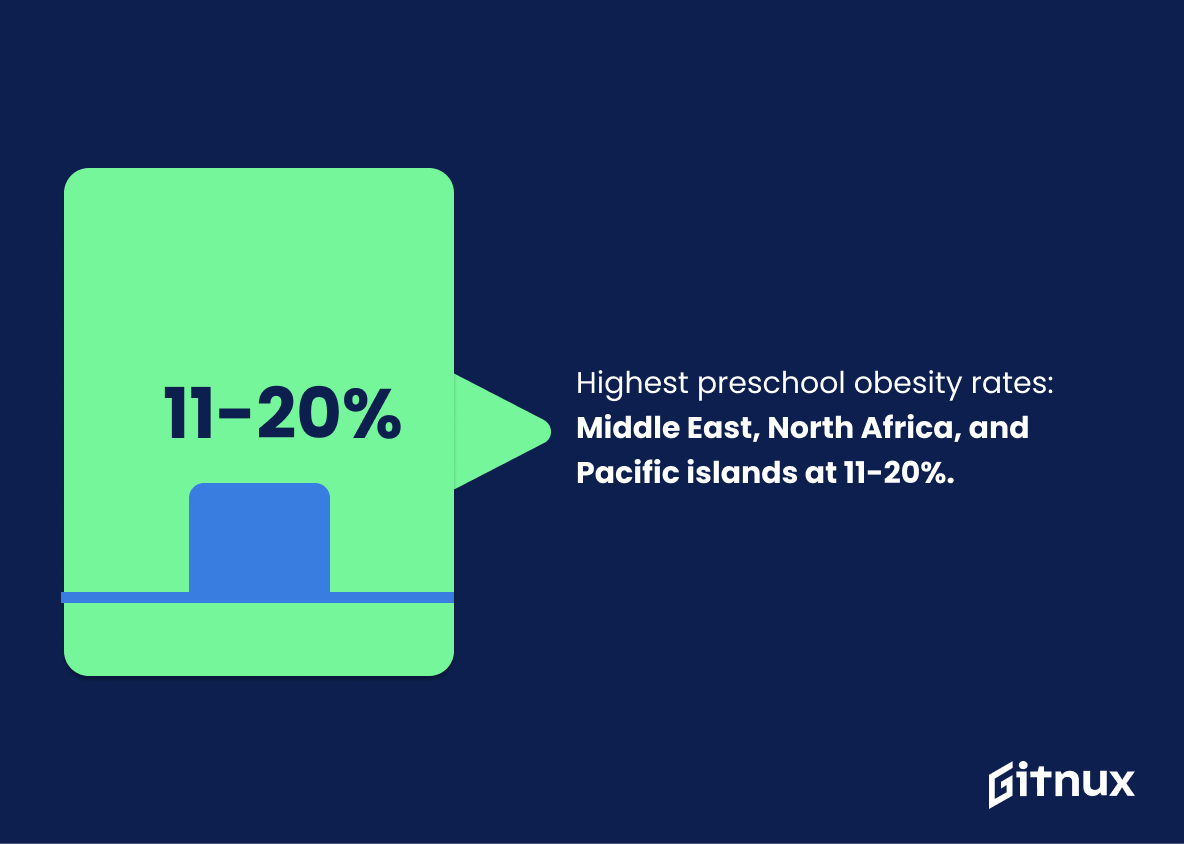Preschool obesity is a growing problem in many countries around the world. According to recent statistics, approximately 14% of toddlers and preschoolers are dealing with obesity. In the United States alone, US preschool obesity rates have increased from 5% in 1980 to over 12% in 2015. The percentage of obese children is higher for boys (32.1%) than girls (27.2%), and some racial and ethnic minority groups experience nearly 1 in 5 preschool-aged children being obese or overweight.
The long term effects of childhood obesity can be devastating; one study showed that 70% of obese preschool-aged children were still overweight at age 12, while another found that those who are overweight as young kids are more than twice as likely to become an adult struggling with weight issues later on down the line.
In addition to this alarming trend within America’s borders, other nations such as Canada (13.2%), UK (9
This statistic is a stark reminder of the prevalence of obesity among toddlers and preschoolers. It highlights the need for parents and caregivers to be aware of the potential health risks associated with obesity in this age group and to take steps to ensure their children are eating healthy and getting enough exercise. It also serves as a call to action for policy makers to create initiatives that promote healthy lifestyles for young children.
US preschool obesity rates have increased from approximately 5% in 1980 to over 12% in 2015.
This statistic is a stark reminder of the growing problem of preschool obesity in the US. It highlights the fact that the issue has been steadily increasing over the past 35 years, and that it is now more prevalent than ever before. This is a cause for concern, as obesity in early childhood can have long-term health implications, such as an increased risk of developing chronic diseases later in life. It is therefore essential that we take action to address this issue and ensure that our youngest generation is given the best start in life.
Preschool Obesity Statistics Overview
In the United States, 13.9% of children aged two-to-five years are obese.
This statistic is a stark reminder of the alarming prevalence of obesity among young children in the United States. It serves as a wake-up call to parents, educators, and policy makers to take action to address this growing problem. It is a reminder that the health of our youngest citizens is at risk and that we must take steps to ensure that they have access to healthy foods and physical activity.
In some racial and ethnic minority groups, nearly 1 in 5 preschool-aged children are obese.
This statistic is a stark reminder of the alarming prevalence of obesity among preschool-aged children in certain racial and ethnic minority groups. It highlights the urgent need for greater awareness and action to address this growing health issue.
One study showed that 70% of obese preschool-aged children were still overweight at age 12.
This statistic is a stark reminder of the long-term effects of obesity in preschool-aged children. It highlights the importance of early intervention and prevention of obesity in this age group, as the consequences of being overweight at such a young age can have a lasting impact on a child’s health and wellbeing.
In the United States, the highest percentage of preschool-obesity cases is among Hispanic or Mexican-American children, at 16.7%.
This statistic is a stark reminder of the disproportionate burden of preschool obesity among Hispanic or Mexican-American children. It highlights the need for targeted interventions to address this issue and ensure that all children have access to healthy foods and physical activity opportunities.
The UK has one of the highest rates of preschool obesity, with 9.9% of four-to-five-year-olds classified as obese.
This statistic is a stark reminder of the prevalence of preschool obesity in the UK, highlighting the need for urgent action to tackle this growing problem. It serves as a call to arms for parents, educators, and policy makers to take steps to ensure that children are given the best possible start in life.
In Canada, approximately 13.2% of children aged two-to-five-years-old are obese.
This statistic is a stark reminder of the prevalence of obesity among preschool-aged children in Canada. It highlights the need for greater awareness and action to address this growing health issue. It also serves as a call to action for parents, educators, and healthcare professionals to take steps to ensure that children in this age group are provided with the resources and support they need to lead healthy lifestyles.
Children participating in the Women, Infants, and Children (WIC) program have seen a decrease in preschool obesity rates from 2010 to 2016, a drop from 15.9% to 13.9%.
This statistic is a testament to the positive impact that the Women, Infants, and Children (WIC) program has had on preschool obesity rates. It shows that the program has been successful in reducing the prevalence of obesity among preschoolers, which is an important step in the fight against childhood obesity. This statistic is a reminder that programs like WIC can be effective in promoting healthy lifestyles and preventing obesity in young children.
Just over 40% of two-to-four-year-old children worldwide consume sugary drinks daily, increasing the risk of obesity.
This statistic is a stark reminder of the alarming prevalence of sugary drink consumption among young children, and the potential health risks associated with it. It highlights the need for greater awareness and education around the dangers of excessive sugar intake, and the importance of providing healthier alternatives for young children.
The highest obesity prevalence among preschool-aged children is in the Middle East, North Africa, and some island nations in the Pacific, between 11% and 20%.
This statistic is a stark reminder of the alarming prevalence of obesity among preschool-aged children in the Middle East, North Africa, and some island nations in the Pacific. With obesity rates ranging from 11% to 20%, it is clear that this is a serious issue that needs to be addressed.
In 2003, the prevalence of overweight and obesity combined in Chinese children aged 2-5 years was 15.0%.
This statistic is a stark reminder of the growing prevalence of obesity in Chinese children aged 2-5 years. It highlights the need for greater awareness and action to tackle this issue, as well as the importance of early intervention to prevent the development of obesity in this age group.
Conclusion
The statistics presented in this blog post demonstrate that preschool obesity is a global issue, with rates ranging from 8.1% to 20%. In the United States, approximately 14% of toddlers and preschoolers are dealing with obesity, while US preschool obesity rates have increased from 5% in 1980 to over 12% in 2015. The highest percentage of obese children is among Hispanic or Mexican-American children at 16.7%, and boys (32.1%) tend to be more affected than girls (27.2%). Furthermore, physically active preschoolers are less likely to become obese; however only 7% meet the recommendation for physical activity levels needed for prevention of childhood overweight/obesity according to current guidelines. Finally, some programs such as WIC and Head Start have seen decreases in their respective populations’ prevalence of childhood obesity since 2010-2016 respectively; yet there remains much work still needing done on an international level if we hope to reduce these numbers further going forward into the future
References
0. – https://www.www.who.int
1. – https://www.www.hsph.harvard.edu
2. – https://www.www.nature.com
3. – https://www.www.medicalnewstoday.com
4. – https://www.pubmed.ncbi.nlm.nih.gov
5. – https://www.corporate.dukehealth.org
6. – https://www.www.cdc.gov
7. – https://www.www.ncbi.nlm.nih.gov
8. – https://www.journals.plos.org



